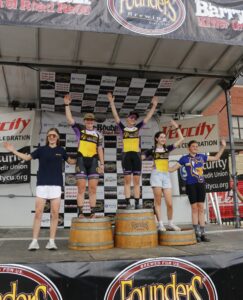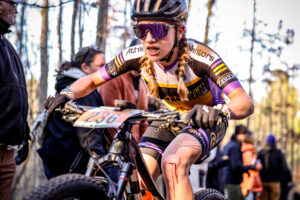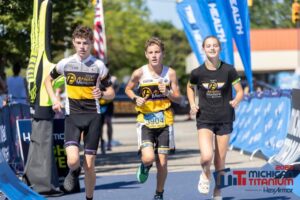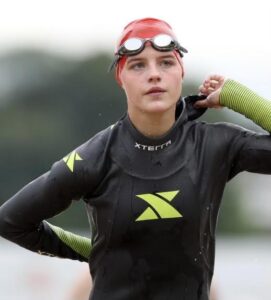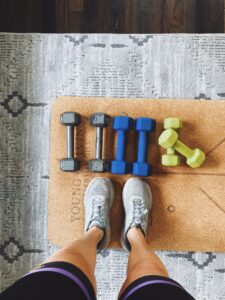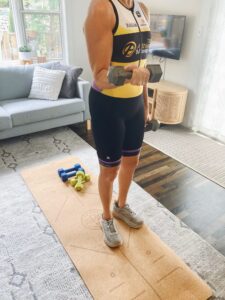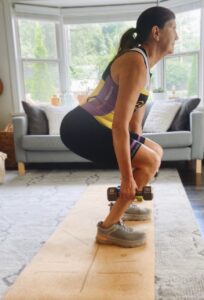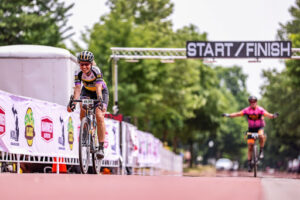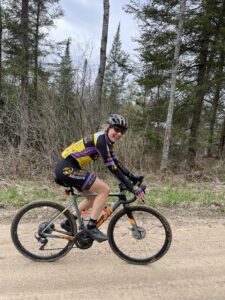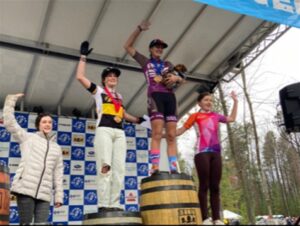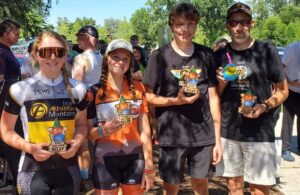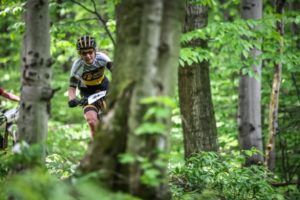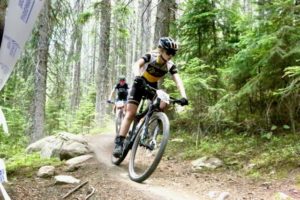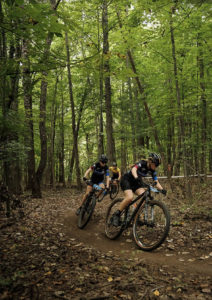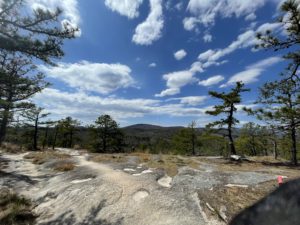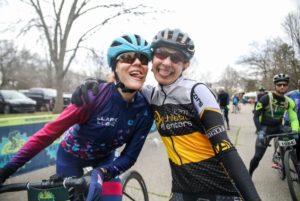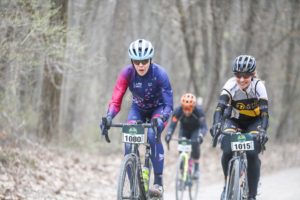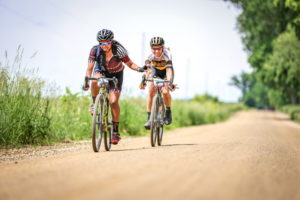By:Katja Opfer
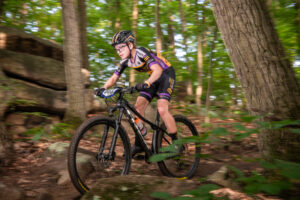 My first season on TAMJD got off to a bit of a rough start when I broke my thumb at my high school ski team’s training camp in early January. While my ski racing season ended before it even began, this meant that I had a lot of time to train and build up base miles in Zwift. Breaking my thumb reinforced my belief that everything happens for a reason, because having all that time to train set me up well going into the cycling season and it paid off. My fitness was better than ever before and I had a great time at the team’s spring training camp in North Carolina, where I got to do some amazing rides. I also had the opportunity to participate in V02 testing at Athletic Mentors headquarters with some of my teammates, which was a great learning experience.
My first season on TAMJD got off to a bit of a rough start when I broke my thumb at my high school ski team’s training camp in early January. While my ski racing season ended before it even began, this meant that I had a lot of time to train and build up base miles in Zwift. Breaking my thumb reinforced my belief that everything happens for a reason, because having all that time to train set me up well going into the cycling season and it paid off. My fitness was better than ever before and I had a great time at the team’s spring training camp in North Carolina, where I got to do some amazing rides. I also had the opportunity to participate in V02 testing at Athletic Mentors headquarters with some of my teammates, which was a great learning experience.
Going into the first race of the season, Barry Roubaix (18-mile), I had fairly low expectations for myself since it was my first gravel race. To my surprise, I won first overall female and set a new female course record on the way to helping TAMJD win the team competition for the third year in a row! My success in this race opened up the world of gravel racing to me and I went on to place second overall female in the Cowpie Classic Short Haul (36-mile) and also won overall female at De Ronde Van Grampian (25-mile). I had never done any gravel riding before this year, but it became an essential part of my training every week and provided something different to change it up.
A lot of my training and preparation this season was focused on the Mountain Bike National Championships in Bear Creek, Pennsylvania. This was my chance to see how I stacked up against girls my age from all over the country. The course was super intimidating with more rocks than I had ever seen on a mountain bike trail in my life, and some pretty nerve-wracking features to tackle. With my limited experience on techy terrain, plus being one of only a few racers on a hardtail, I felt like I was thrown into the deep end. I spent many hours practicing on the course and built up my confidence a ton by the day of the XC race. My result of 28th out of 74 proved to myself that I could compete against these incredibly fast girls and gave me some ideas of what my goals should be for next year.
My last race before MiSCA season was the Ore 2 Shore Soft Rock, which was one of the most fun and challenging races I did all year. The 28-mile course located in the U.P. was beautiful and had a fair amount of long climbs and fun descents on many types of terrain. This race was very competitive, and I really left everything I had out on the course with a sprint finish to win first place overall female. This win was a big achievement for me given that it was such a close race.
MiSCA season felt a lot different this year because I went from only racing the 6 MiSCA races last year to doing over 20 races this year. Winning all 6 races as a sophomore in my first Varsity season, after sweeping JV last year as a freshman, was pretty unreal. This year MiSCA was really about the atmosphere and the friendships. It’s not very common that you are friends with all your competitors. Even though we are on different scholastic teams, many of us are on TAMJD together and we invited the other Varsity girls to hang out with us after the races too. This dynamic made the races a lot more enjoyable because I was cheering on my friends and teammates.
My last race of the season was the Iceman Cometh Challenge in Traverse City. Being the indecisive person that I am, I waited until practically the last minute to switch to the Pro category. After careful consideration of my season so far, and placing 2nd overall in Pro women at Peak 2 Peak two weeks before, I decided to switch to Pro at Iceman. Even though it was my first time racing Iceman, I felt confident that I could race in the Pro category after pre-riding the course. I had a great start but unfortunately I was involved in a crash around mile 4, which most likely took me out of the running for top ten. I gave everything I had to bridge up to the lead group, but couldn’t stay with them and got dropped halfway through the race. I was still able to finish 12th in a stacked field of 26 Pro women. I saw this race as a chance to prove myself and was really frustrated that it didn’t work out the way I wanted, but what can you do? I’ll be back next year, that’s for sure.
In summary, I view my first year beyond the horizons of MiSCA to have been very successful. Having a structured training plan provided by my Athletic Mentors coach Terry Ritter definitely helped me train productively to accomplish my goals. Next year I am setting my sights on more national-level races, possibly including gravel and marathon Nationals, and hopefully I can break into the top 20 at MTB Nationals. I also plan on doing some longer gravel and MTB endurance races after doing so well in the shorter versions, including Barry Roubaix, Cowpie, and Ore 2 Shore. I am excited for my second year with TAMJD and am looking forward to all the racing in 2024!






